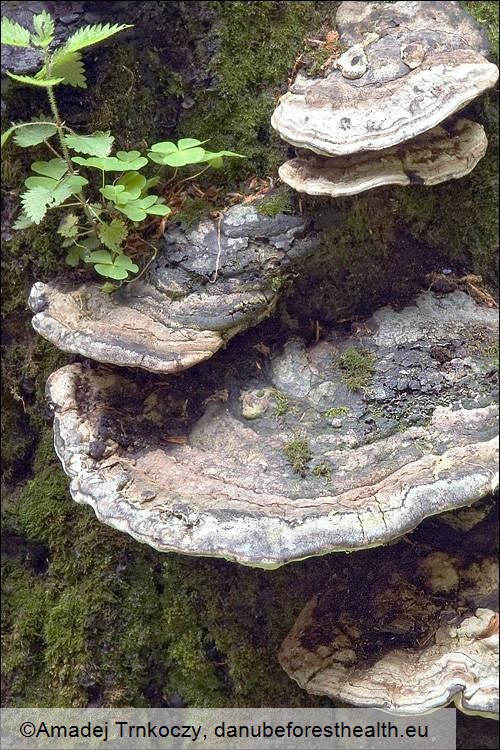Fungi
Perenniporia fraxinea
Perenniporia fraxinea
Thomas Cech
|
|

Fig. 1. Perenniporia fraxinea, fruiting body

Fig. 2. Perenniporia fraxinea, pores
DETECTION PERIOD:
Whole vegetation season, new fruiting bodies mostly June-August.
DESCRIPTION:
Perennial brackets growing at bases of stems, commonly covered by moss on the upper side, sessile, sometimes arranged in roof-tile-like groups, hemicircular to ungulate, 10–40 cm in diameter, up to 6-35 cm thick (fig.1); upper side brown, greyish to ochre, with irregular zones, surface usually without cracks; flesh cream to light ochre, hard, fibrous, densely zonated; pores small, roundish, light cream to cork brown (fig.2); smell unpleasant (fish and traces of anise). Spore print color cream.
HABITAT:
Broadleaved trees, especially from the genera Fraxinus, Quercus, Robinia, rarely reported also from Acer, Aesculus, Castanea, Celtis, Eucalyptus, Fagus, Gymnocladus, Juglans, Olea, Malus, Platanus, Populus, Prunus, Salix, and Ulmus, in forests (also riparian forests), parks, gardens, alley trees; thermophilic species.
STATUS:
Rather rare and sometimes on the red list.
IMPACT:
Wound parasite, infecting living trees at the stem base, then spread into the heartwood of the stem base and to roots, causing a white rot and consequently uprooting of the infected tree.
SIMILAR SPECIES:
Ganoderma species (fig.3); however, with brown spore print color and usually glossy surface of the brackets as well as dark flesh.
|